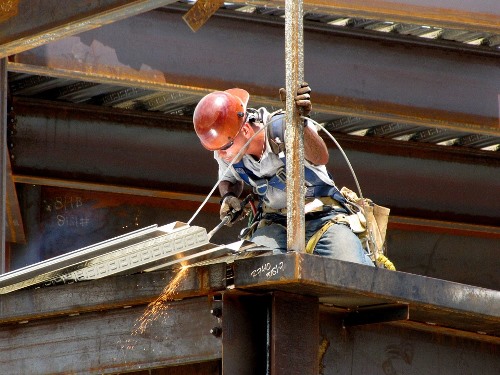|
Labor Day in Bolivia - May 1st Labor Day. Español The history of how the 8-hour work day was achieved is one of the struggles that was won at a high cost to the proletariat. It began near the end of the 19th Century in Chicago which, at the time, was the second most populated city and the largest industrial center in the United States. Since 1829 labor movements had been formed in this city to pressure state legislatures to decree a maximum number of hours to be worked per day.
Back then the average work day was 10 to 12 hours long and it was common for company owners to impose workdays of up to 18 hours without sufficient pay. Under these circumstances the United States Labor Federation, the largest union in the country, decided to mobilize until, after years of applying pressure, a new law was created in its favor in 1886. Because there was resistance to it, the union decided to strike on the 1st of May 1886 to ensure the 8-hour work day stipulated by the Ingersoll law, signed that year by President Andrew Jackson, would be applied.
Throughout the country the strike was carried out to the letter; however, in Chicago it lasted four days. Only the McCormick agricultural equipment factory continued to operate and this is where the first deaths occurred on the third day. During a fight between factory employees and a group of workers who had gathered in a rally nearby, the Police shot against the crowd at point blank range and without warning, killing six and injuring many more. These killings worsened things as on the following day, May 4th, an enormous concentration of workers formed at the Haymarket Plaza in Chicago and was repressed by police. During the confrontation, an explosive was thrown at police, who opened fire in response. The exact number of dead and injured from this new massacre is unknown. Following this several union members were arrested and prosecuted. In the end only eight were accused and of these, after a dubious trial during which legal procedures were violated, five were condemned to death, two were sentenced to life sentences, and one was given 15 years of forced labor. It is curious to note that of the eight union leaders, all except one were immigrant workers. Their names: August Spies, Oscar Nebbe, Michael Schwab, Georg Engel, Adolf Fishcer, and Louis Linng (German); Samuel Fielden (English); and Albert Parsons (North American), who was not at Haymarket but wished to be tried along with his friends, and was executed along with them. Years later, the Socialist Worker Congress of the Second International Worker’s Association met in Paris in 1889 and Declared the 1st of May as International Labor Day in homage to the struggle led by these men who are now knows as the Martyrs of Chicago, and the thousands who accompanied them. Bolivia began to celebrate this date in 1906 when a labor union in La Paz organized a small fair. Later the date became much more relevant as railroad worker unions began to grow and miner’s unions began to arise during the 1910’s and 1920’s. However, it was still simply a memorial date with small groups of workers parading and artisan fairs until after the Revolution of 1952 when the miner’s union acquired a lot of political power and the Bolivian Labor Union Headquarters began to be taken seriously as a union movement. This Bolivian organization of unions began in the Cervecería Boliviana Nacional and Salvietti (beer and soda) bottling factories but didn’t have much power until the miners, with their Tésis de Pulacayo (a document signed at a meeting of the Federation of Bolivian Miners Unions), put labor union demands and successes on paper for the proletariat in 1946. This Thesis led to the formation of the Movimiento Nacionalista Revolucionario (MNR, Nationalist Revolutionary Movement) a political party which, supported by miners and peasants, took power in 1952. This party passed laws containing favorable working conditions for laborers in Bolivia. However, it was the MNR itself that, in 1985, created the now sadly famous Decree 21060 that discredited these achievements, which continue to be reclaimed by peasants and unions. The latter are now in power in this country and they celebrate Labor Day with marches, rallies, parades, fairs and other festivities. It is also a tradition for the President of the nation to participate in an act to commemorate the day and he/she usually announces economic and political measures that favor workers. Moreover, in Bolivia this has been a national holiday since 1982 when democracy returned to the country and no one works on this day. (During previous years, several military dictatorships had restricted celebrating Labor Day.) To North Americans it may seem strange that many countries of the world celebrate Labor Day on May 1st based on events that took place in Chicago in 1886 because in the USA Labor Day is celebrated the first Monday of every September and is based on events that took place 16 years before that, in 1870 in Canada! Correspondent Alura Gonzales     |
